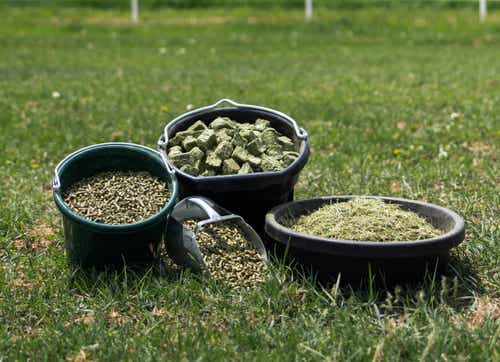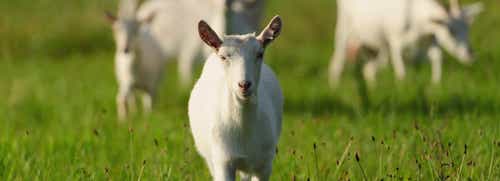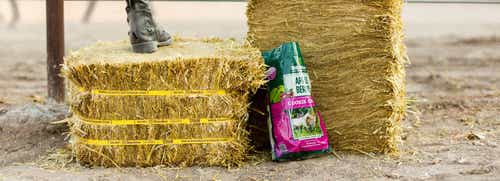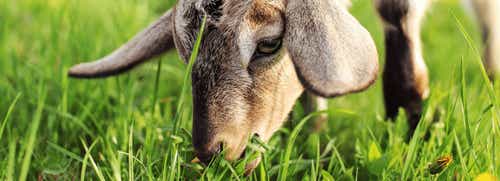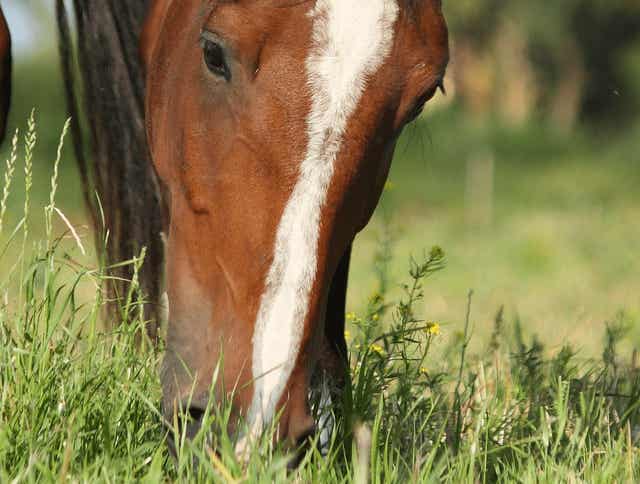
Prevent Overheating in Horses Using Nutrition
To understand how to use nutrition to prevent overheating in horses we must first understand fully how the digestive system works and creates heat.
We will skip past the stomach and small intestine as very little to no heat is created here from digestion, and start at the beginning of the large intestine of the horse.
In horses, the large intestine begins with the cecum; adjoining the cecum is the large colon. Like the rumen of the cow, the cecum and large colon work like a fermentation vat. Billions of bacteria produce enzymes that are able to breakdown the fibrous portion of the diet.
Dietary fiber is the portion of the feed not broken down by the horse’s own digestive enzymes and is the structural component of plant material. Some of this fiber can be digested by microbial enzymes, particularly cellulose and hemicellulose. On the other hand, lignin – another fiber form – is not digestible and will be passed in the feces. For this reason, the type of dietary fiber influences its nutritional value. Overly mature hay will have relatively high amounts of lignin, which reduces its digestibility and, therefore, its value as a dietary source of nutrients and energy. However, young hay, beet pulp, and soy hulls have much less lignin and much more digestible fiber. They are, therefore, much more valuable to the horse as an energy source.
The products of the fermentation process are the volatile fatty acids (VFA’s) acetate, butyrate and propionate, HEAT, water and gas. The VFA’s are absorbed into the bloodstream, providing an extremely important source of energy for the horse.
Another very important function of the large intestine is the absorption of water. Each day, a huge quantity of water is secreted into the horse’s small intestine as part of the digestive process – about 30 gallons for an 1100 lb horse. As the feed moves down the various sections of the large colon, much of this fluid is reabsorbed, allowing the formation of semi-solid fecal material. The final step in the digestive process occurs in the small colon, where the waste material is formed into fecal balls that are evacuated through the rectum and anus.
The horse’s digestive system works best when it is fed a predominantly forage diet on an almost continuous basis. When feeding horses in hot conditions, make sure you are supplying them with highly digestible forage sources and avoid feeding poor quality over mature hays. It is also important to remember that the cecum and large intestine are an important reservoir of fluids that are rich in nutrients and electrolytes from the horse’s feed. Fiber in the gut helps to create this reservoir of fluids. While it is important to feed highly digestible fiber sources, it is just as critical to maintain an adequate amount of fiber in the diet. Never feed less than 1% of the horse’s body weight in fiber; ideally the horse should receive 1.5 to 2% of its body weight in fiber each day. Following these nutritional guidelines will help keep the horse hydrated, its digestive system working smoothly, and prevent overheating.
Owners should be aware of the signs of heat stress suffered by horses in the summer. It is important to understand and recognize the signs of heat exhaustion and to know what to do when these signs have been observed. Horses with heat exhaustion may continue to sweat excessively, or in severe instances, may stop sweating altogether. Signs of heat stress include weakness, stumbling, increased respiratory rate (> 32 breaths per minute), and an increased rectal temperature (>102°F) after removal from exercise. Notify your veterinarian immediately if any of these signs are observed.
By Dr. Tania Cubitt
Dr. Tania Cubitt
Performance Horse Nutrition
Dr. Cubitt is a native of Queensland, Australia. She completed her Master of Science and Doctor of Philosophy degrees in equine nutrition and reproduction at Virginia Tech. Dr. Cubitt has a wealth of knowledge in nutrition as it relates to reproduction and a background that includes all aspects of equine farm management.

